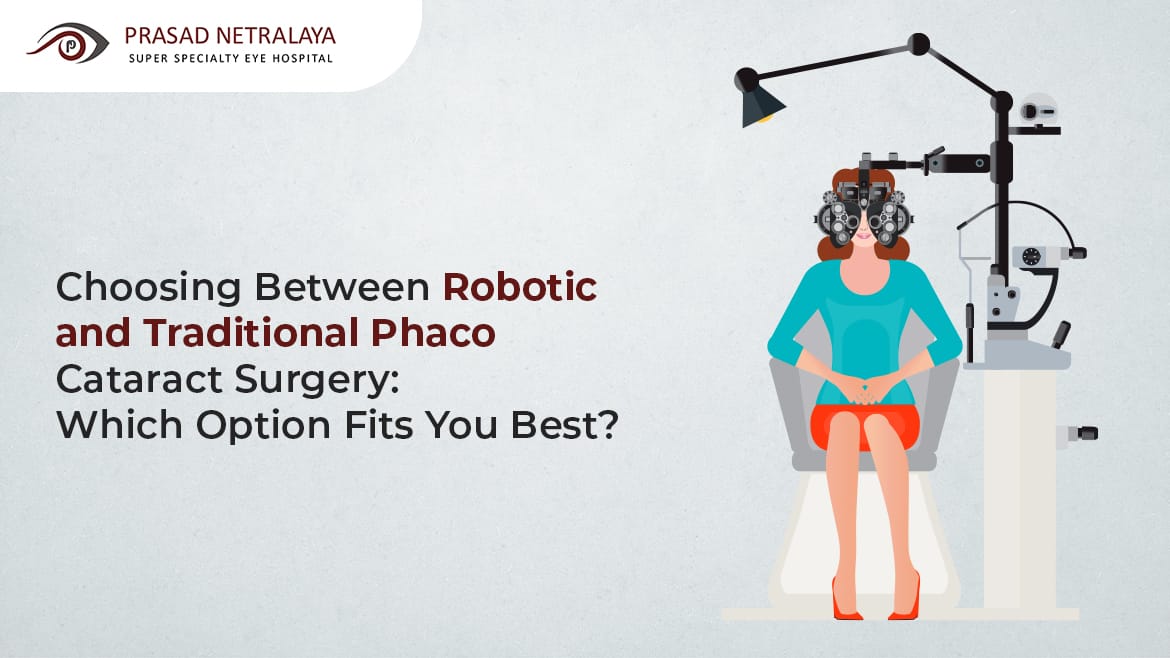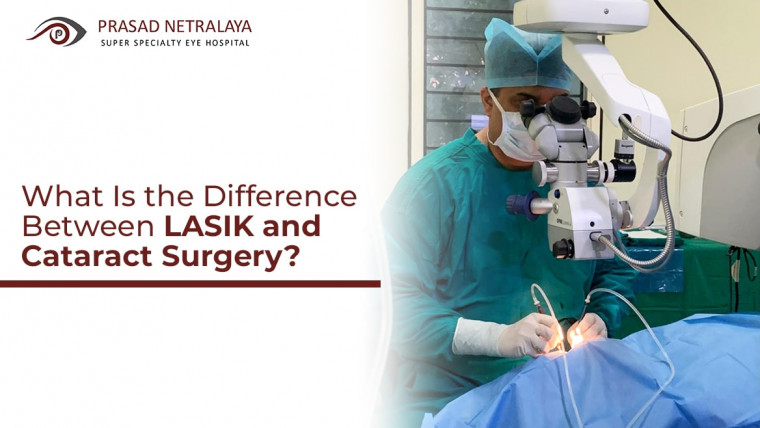Although cataracts are common, they can significantly impact vision and quality of life. Fortunately, advances in surgical techniques offer many treatment options, including traditional phacoemulsification and new robotic cataract surgery procedures. But how do you decide which is right for you?
Let’s explore the differences between these two options in more detail to help you make the right choice.
Table of Contents
Understanding Traditional Phacoemulsification
For many years, phacoemulsification or traditional phaco cataract surgery has been the trusted method for removal. In this procedure, the surgeon manually creates small incisions in the eye to access the cloudy lens and uses ultrasound technology.
Once the cataract is removed, an artificial lens is implanted to restore clear vision.
Understanding Robotic Cataract Surgery
Robotic cataract surgery is a cutting-edge innovation that leverages advanced robotic technology to assist the surgeon in crucial aspects of the procedure. Unlike traditional surgery, where the surgeon performs the entire procedure manually, robotic assistance enhances precision and control.
The evolution of cataract surgery promises unmatched corneal precision and improved results for patients.
Comparing the Benefits of Traditional and Robotic Cataract Surgery
Both traditional and robotic cataract surgery have their advantages, but they differ in a few ways.
1. Accuracy
Robotic surgery is more accurate than traditional cataract surgery due to advanced imaging and robotic guidance systems. This accuracy improves visibility and reduces the risk of complications.
2. Recovery Time
While both procedures generally have a quick recovery time, some studies suggest that patients undergoing robotic cataract surgery experience faster healing and return to normal condition early.
3. Customization
Robotic surgery enables treatment plans tailored to each patient’s unique eye anatomy and can provide highly customized results.
4. Cost
As compared to the traditional procedure, the initial robotic cataract surgery cost can be high. However, the long-term benefits and potential savings in improved outcomes and reduced complications may exceed the initial investment for some patients.
5. Dependence on Technology
Robotic cataract surgery relies heavily on advanced technology, including imaging and robotic guidance, which can lead to high levels of dependency.
Unlike conventional surgery, it is based primarily on surgeon skill and experience, with minimal reliance on technology.
6. Accessibility
Traditional cataract surgery has been widely available in most healthcare settings, making it accessible for many patients.
However, robotic surgery may be limited to specialized centers where robotic systems are available and may restrict access to some patients depending on their location.
Making Your Decision Between Robotic and Traditional Phoco Cataract Surgery
Ultimately, the decision between robot and traditional phaco cataract surgical operation should be based on thorough research on the advantages, risks, and personal choices. Both techniques have proven track records in restoring vision and improving patients’ quality of life with cataracts.
By discussing your options with your eye care provider and considering factors including precision, price, and availability, you can choose the method that aligns with your needs and goals.
Finding the Right Path for Your Cataract Surgery
Whether or not you opt for robotic or traditional phaco cataract surgery, the goal remains the same: to enhance your vision and improve your quality of life. Each method offers its advantages, and your decision will depend on various factors specific to your situation.
Prasad Netralaya Eye Hospital provides robotic and traditional cataract surgical operation options, ensuring patients access to cutting-edge eye care treatments. Schedule your consultation with Prasad Netralaya Eye Hospital today and take the first step towards a more precise vision.
FAQ (H2)
1. What is thе main diffеrеncе bеtwееn robotic and traditional phaco cataract surgеry?
Thе main diffеrеncе liеs in thе approach and tеchnology usеd. Robotic cataract surgеry utilizеs advanced robotics and imaging systеms for prеcisе and customizеd trеatmеnt, whilе traditional phaco surgеry involvеs manual tеchniquеs pеrformеd by thе surgеon.
2. Is robotic cataract surgеry morе еxpеnsivе than traditional phaco surgеry?
Yеs, robotic cataract surgеry gеnеrally involvеs highеr initial costs compared to traditional phaco surgеry. Howеvеr, thе long-tеrm bеnеfits and potеntial savings in improvеd outcomеs may justify thе invеstmеnt for somе patiеnts.
3. Which option offеrs fastеr rеcovеry timе?
Whilе both options gеnеrally offеr quick rеcovеry timеs, some studiеs suggеst that patiеnts undеrgoing robotic cataract surgеry may еxpеriеncе fastеr hеaling and rеturn to normal activitiеs еarliеr comparеd to traditional phaco surgеry.
4. How do I know which option is suitable for me?
Thе choicе bеtwееn robotic and traditional phaco cataract surgеry depends on various factors, including your prеfеrеncеs, budgеt, dеsirеd lеvеl of prеcision, and surgеon rеcommеndation. Consulting with your ophthalmologist can hеlp you make an informеd decision based on your specific nееds and circumstances.
Dr. Vikram Jain, M.S. had his medical training (MBBS) from Kasturba Medical College, Mangalore, India. He did his master’s in Ophthalmic surgery from Kasturba Medical College, Manipal. He currently manages the Glaucoma department of Prasad Netralaya hospital.



